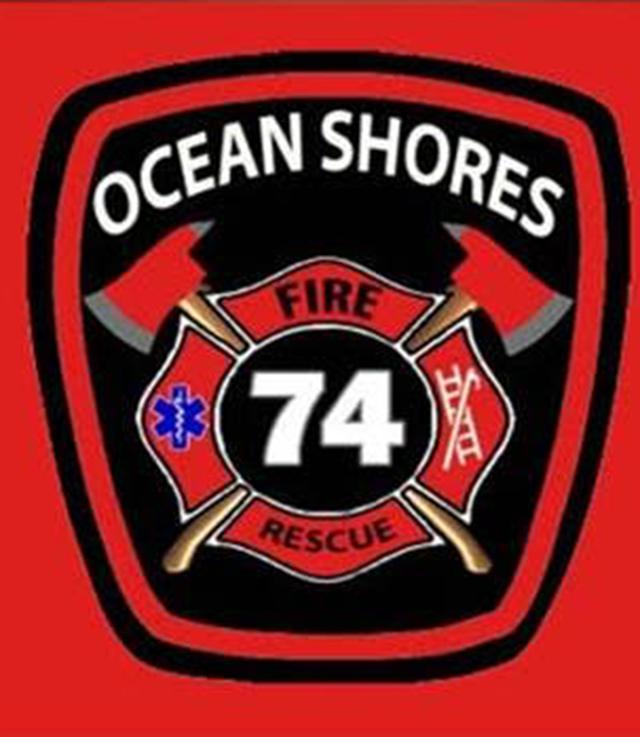About 6 years ago, there was a new unfunded state mandate that was passed with the intent to improve emergency cardiac and stroke care in Washington through an evidence-based coordinated system of care.
All of the EMS/ambulances within the state have to follow this policy. Patients that meet the predetermined criteria for a stroke or a heart attack will be transported to the nearest hospital with a catheterization laboratory (Cath Lab). No state money is available to the individual departments and cities for these critical patients.
Although this is a strain on our department, the patient outcomes have been improved and we have truly positively affected people’s lives with this new statewide coordinated system of care. The nearest Cath Lab to Ocean Shores is in St. Peter’s Hospital in Olympia, approximately 1.5 hours away. There are tight time windows of opportunity when using this treatment. Time is of the essence and can truly be life or death.
When we get on scene, we evaluate the patient and determine the needs for care. We have to call our local hospital (Grays Harbor Community Hospital) while en route and explain our findings to the Emergency Room doctor. We quickly stop at Grays Harbor Community Hospital to allow the staff there to confirm our findings and also administer some lifesaving clot-busting drugs known as thrombolytic therapy. This is usually administered through a medication pump and sent with the patient for the paramedic to administer. This procedure at GHCH may take from 20-40 minutes. The ambulance proceeds to Olympia with 1-4 medication pumps attached to IV’s. The crew consists of the paramedic and possibly a second paramedic in the back of the ambulance to help manage patient care. It depends on stability of the patient and the availability of personnel.
When we arrive at St. Peter’s, we take the patient straight to the Cath Lab in the hospital. This is where the patient finally has a team waiting to give definitive lifesaving treatment. It is vital that the catheterization team is available and ready to move the patient directly from the gurney to the operating table.
The Ocean Shores EMS crew now needs to get their ambulance cleaned and secured as well as finish the report in order to leave a copy at St. Peter’s Hospital.
The EMS crew then has to return to GHCH to return their medication pumps and any other equipment borrowed and leave a copy of the report. Once the crew arrives back in Ocean Shores. the ambulance will need to be completely restocked, refueled and rechecked to ensure it is 100 percent operational and ready for the next emergency. From start to finish, this process takes anywhere from 4.5 to 6 hours.
There are plenty of challenges that come with this service. The first challenge is initial patient care. Did we revive this patient via CPR and defibrillation? Is the patient stable or unstable? Do we need extra personnel to go in the ambulance to help manage the patient care on the way to the hospital? In 7 of the last 8 continuation transports to Olympia we have needed at least a third person on the ambulance crew and sometimes even a fourth.
Currently, we are fortunate to have adequate staffing due to the federal SAFER grant. Even at our current staffing levels, it often leaves one member back at the station to cover all of Ocean Shores’ fire and EMS needs.
When we are unable to get station coverage, it is always a dangerous position for us and the citizens. It limits our capabilities to respond to other 911 calls.
During the extended time frame of one of these types of calls, the crew is physically working hard with CPR, lifting and moving the patient, moving about the back of the ambulance and keeping our balance while bouncing down the highway at increased speeds. These are not easy tasks and demand a certain level of physical conditioning and sustained focus. There is also the 6 hours of mental focus that comes with practicing medicine and sustaining a person’s life in the back of an ambulance, which has to be unwavering.
There is no telling what time these transports will happen and it could happen in a moment’s notice, creating a challenging task for our crews to remain “ops ready.” Our goal is to be prepared, both equipment and crew, for any emergency that may arise within our city and beyond — 24 hours per day, seven days per week, and 365 days per year. Once our patient has been treated and transported, the ambulance has to be put back into service including our crew. The staff will need rest, food and debriefing; the ambulance will need to be fueled, cleaned and restocked.
In closing, transporting patients to Olympia may not be a choice for the ambulance crew but the best choice for patient outcome.
It has created increased cost for station coverage, increased maintenance on ambulances, an increase demand on the crew, and a decrease in fire and EMS coverage for the city during these transports.
But this has all been in the interest of saving people’s lives and giving more people the opportunity to have a full recovery and lead a productive life after a heart attack or stroke event. That is our purpose in this service and it has improved patient outcomes.
For that, we will negotiate the extra demands and obstacles that come with this mandate, and we will do our best to always answer the call of this city to the best of our ability.



